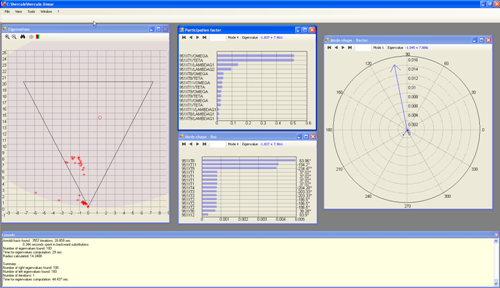DYNAMIC
MODULE EUROSTAG®
Dynamic Simulation
Fast and slow phenomena
EUROSTAG® covers the full range of transient, mid and long-term stability, from electromechanical oscillations up to daily load evolution. By allowing understanding in depth all critical system mechanisms, EUROSTAG® helps solving
- conventional problems such as critical clearing times, power oscillations, tuning of generating units controllers, or load shedding policies
- as well as highly complex power system problems such as voltage collapse and black-out scenarios, set up of defence plans and restoration procedures, transfer capacity calculation, study of centralized voltage or frequency controls, renewables, or power electronics such as FACTS and HVDC.
It also provides an entry point for new opportunities such as on-line dynamic calculations in EMS, system modelling in an integrated environment for analysis, and use of other compatible simulation applications. In every way, EUROSTAG®
A unique algorithm
EUROSTAG is based on a unique and robust algorithm using a continuous varying integration time step-size from 1ms to 100sec which will adapt automatically to the accuracy requirement. The step-size becomes short if a fast phenomenon (such as a loss of synchronism) is excited. It remains long and allows extended simulations (up to several hours) if only slow phenomena are excited.
Main advantages
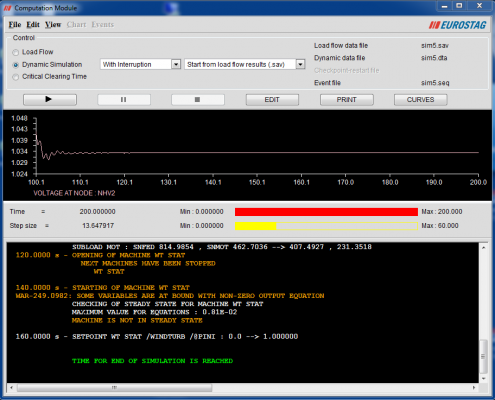
- Continuous representation of both fast and slow phenomena – EUROSTAG ® enables scenario simulations of a few seconds to several hours, making it ideal for studying conditions over time in which fast and slow phenomena interlock.
- Reliable simulation – EUROSTAG ® replicates and integrates all power system components, as well as the actions of operators, to produce authentic real-time dynamic simulation. Observation of any physical variation is possible at any moment, without any prior declaration.
- Flexible but secure power system modelling – EUROSTAG ® offers a vast library of power system models (including dispersed and renewable generation facilities) and processes. These can be used directly or modified – using an advanced modelling language that automatically generates the appropriate equations, removing all risk of human error. It allows representing in a specific way any type of process or controller, no matter the technology.
Critical Clearing Time Calculation
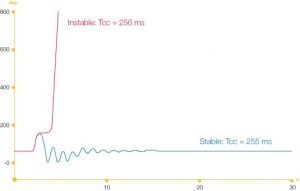 The Critical Clearing Time (CCT) is the maximum time during which a disturbance can be applied without the system losing its stability. The aim of this calculation is to determine the characteristics of protections required by the power system.
The Critical Clearing Time (CCT) is the maximum time during which a disturbance can be applied without the system losing its stability. The aim of this calculation is to determine the characteristics of protections required by the power system.
This analysis is based upon a dichotomic procedure which searches the CCT within a user-defined starting interval and with a given precision.
Each step of the dichotomic search is performed by an automatic run of the main simulation engine generating stable and unstable states. The stability of the system is determined using user defined criteria. The last stable and first unstable states can be fully analyzed using the Post-Processing tools.
Eigenvalues computation and system linearization
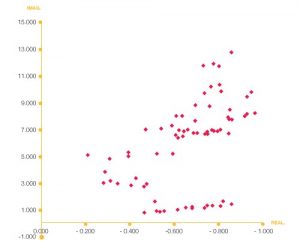 Small Signal Stability is the study of the behaviour of the system subject to small fluctuations around an operating point. Such analysis is useful when studying network modifications like transmission system expansion or interconnection of new units that can affect the oscillatory behavior of the system. The analysis of small fluctuations is performed by the linearization of the equations that describe the system.
Small Signal Stability is the study of the behaviour of the system subject to small fluctuations around an operating point. Such analysis is useful when studying network modifications like transmission system expansion or interconnection of new units that can affect the oscillatory behavior of the system. The analysis of small fluctuations is performed by the linearization of the equations that describe the system.
The approach assumes that the non-linear system can be accurately approximated for small disturbance around a given operating condition by a set linear equations.
The eigenvalues computation, entry point of small signal stability analysis, is a function included in EUROSTAG® to check the stability of small and simple systems. Moreover, Arnoldi method is now available allowing the computation of the right-most eigenvalues of large systems.
For large or more complex systems, a linearized system export function is available for further processing in standard linear systems analysis packages.
To go further in that domain, HERCULES, an EUROSTAG® Add-on developed by ENGIE Impact, is an advanced tool for Small Signal Stability analysis.
Application Programming Interface (API)
Dynamic simulations are more and more used as part of a whole process dedicated to complex control algorithms to improve and to optimize the system operation. The EUROSTAG® API allows the integration of the power of EUROSTAG® dynamic simulation core engine into an external process. With this API, the simulation can be controlled from an external tool or script implemented in Matlab, Python, C++ or any other software able to interact with C-based external libraries. A scenario can be played, paused and restarted after having retrieved all the necessary information from the system and the behaviour of the dynamical simulation can be modified in every moment based on the control actions calculated in the external program.
This new API opens the doors for new applications to better control and optimize your system.
Dynamic Security Assessment (SYSCAN)
As the size and complexity of interconnected grids increases so does the probability of major blackouts due to voltage collapse, loss of synchronism, frequency collapse, etc. For these problems, static security analysis is not sufficient. A dynamic security analysis is required for planning and daily operation.
SYSCAN (SYStem Collapse ANalysis)is a universal Dynamic Security Assessment tool.
Its objective is to automate the analysis of power system behaviour under disturbed conditions to allow an exhaustive approach of preventive and corrective security actions. This automated program simplifies the user’s work and accelerates the analysis.
It identifies the weak, critical or vulnerable elements of the system. Moreover, it is the perfect tool to accurately calculate the security margins of the system facing various disturbances.
The software is based on a detailed modelling of the system studied and an intensive use of simulations. The simulations are performed using the EUROSTAG® computational core.
Results are presented in a synthetic form and can be analyzed with the post-processing tools of EUROSTAG®.
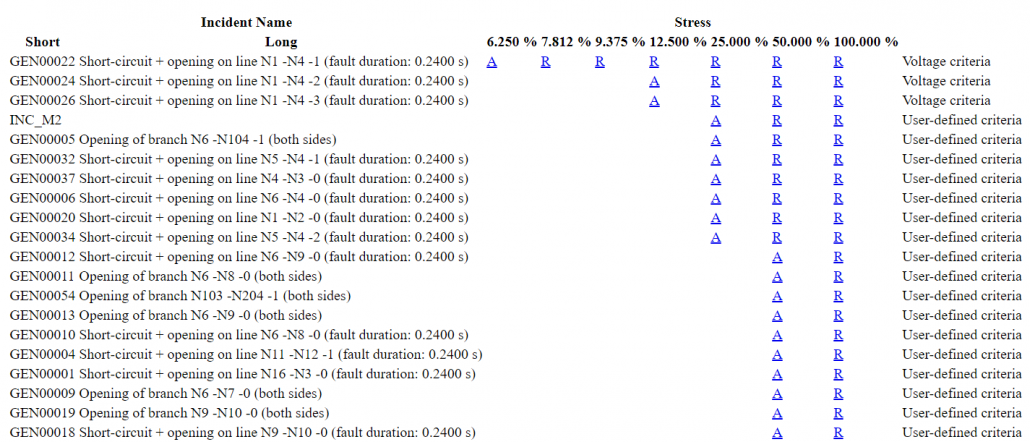
.
Small Signal Analysis (HERCULES)
Small signal stability is the study of the behaviour of the system subject to small fluctuations around an operating point. The small fluctuations can be caused by light disturbances that occur at any time in a network (as a result of switching of loads, control actions…).
HERCULES is a software for the analysis of the system stability for small perturbations of the power system.
The innovative algorithm allows the selection of the eigenvalues of interest and the management of a very large system (more than 100.000 variables). The close link between EUROSTAG® and HERCULES, allowing the user to retain the physical meaning of each variable, opens the door to advanced analysis such as:
- Identification of unstable or badly damped modes;
- Detection of the major machines involved in a particular mode through their participation factor;
- Detection of inter-area oscillations using the mode shapes;
- Detection of optimal PSS location through the controllability analysis;
- Identification of the optimal positions of measurement devices through the observability analysis.
